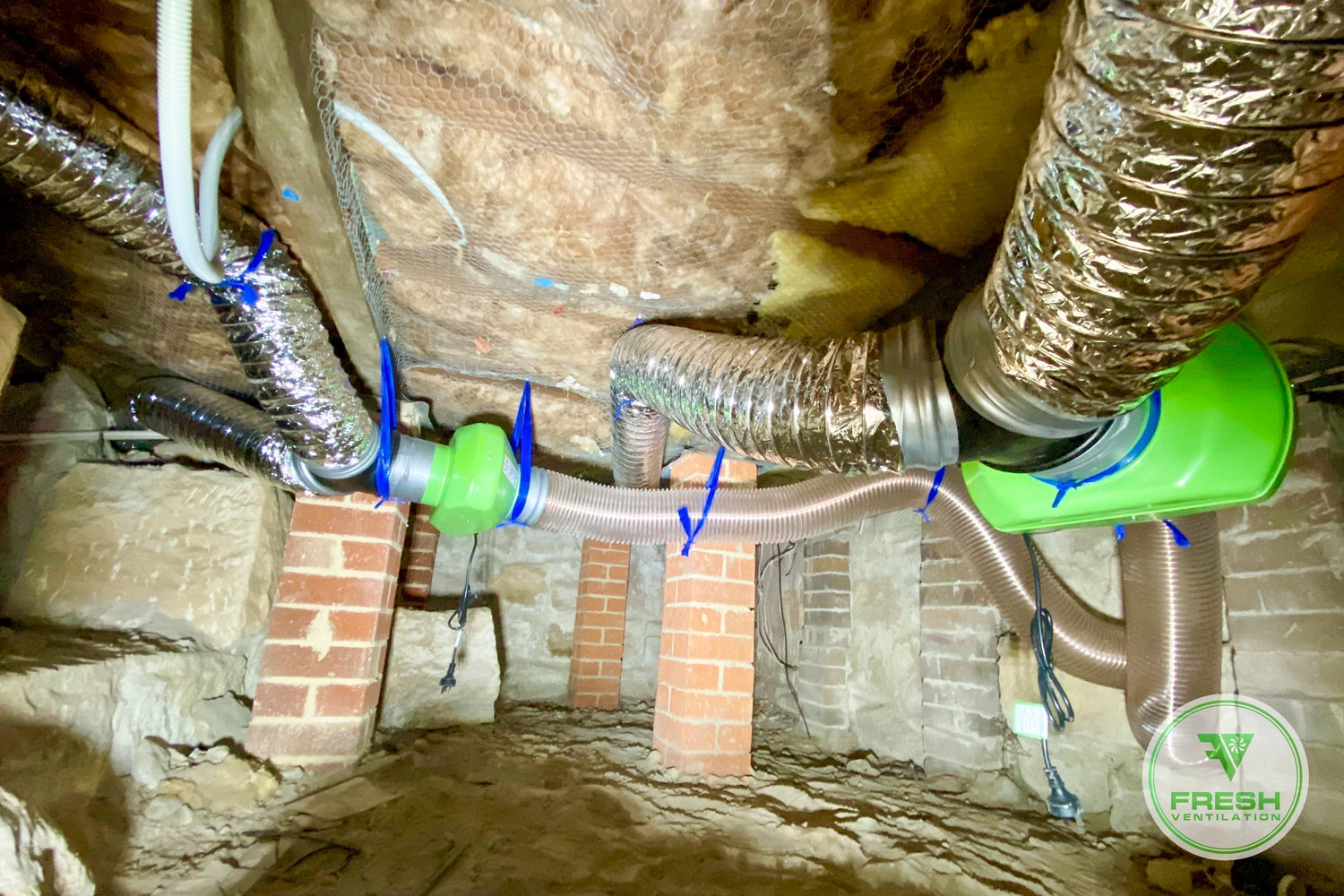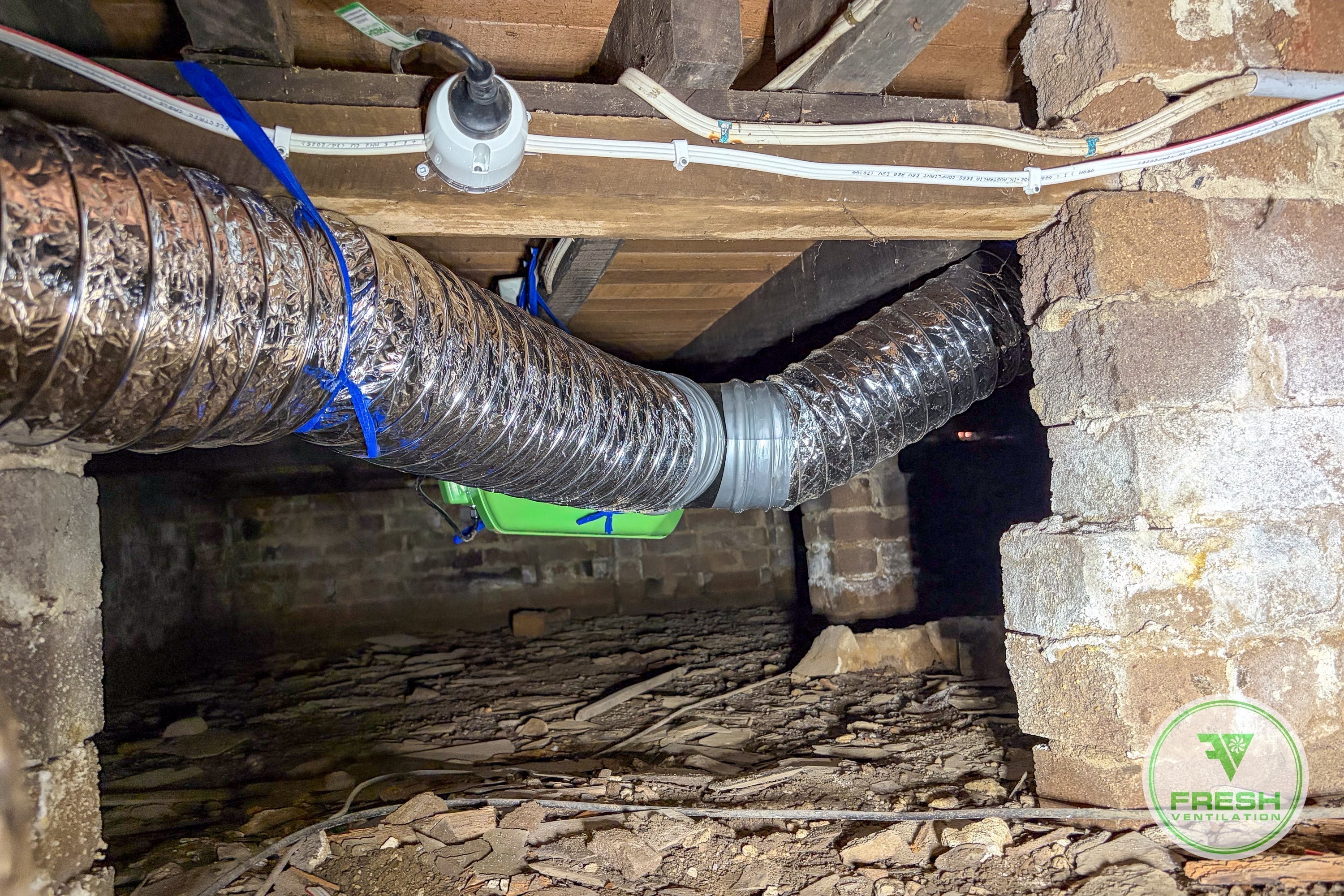DIY Subfloor Ventilation Installation Guide – Step-by-Step, Tips & Best Kits
Installing subfloor ventilation yourself can feel daunting — especially if you’ve never been under a house before. Subfloor spaces are often dark, cramped, muddy and dirty, and knowing where to start can be overwhelming.
But with the right products, a detailed guide, and expert support, DIY installation is absolutely achievable — even for first timers.
At Fresh Ventilation, we make DIY subfloor ventilation easy and successful by supplying professional-grade, Australian made components, custom layout maps, and an extremely detailed step-by-step installation manual. We’re also available on the phone (even on weekends) if you get stuck. We install these systems ourselves every week, so we know exactly how to help you through each step.
Why DIY Subfloor Ventilation Can Be Challenging
- Subfloor spaces can be tight, dark and dirty
- You’ll likely crawl over debris, bricks and pipes
- Visibility and access can be extremely limited
- You may have to cut vents into external walls
- You’re often working alone under the house
This is why cheap, flimsy kits quickly become a nightmare. Poor-quality fans, thin ducting and loose fittings make installation harder and lead to failures later on. Choosing a kit designed for real-world installs is the key to success.
Why Choose Fresh Ventilation DIY Kits
We’ve been installing subfloor ventilation systems for over 15 years, and our DIY kits use the exact same professional components our electricians and carpenters install on site every day.
What sets our kits apart
- Australian made AC and EC fans — low profile, quiet, reliable
- Anodised aluminium grilles — exactly the size of two bricks; fit directly where existing terracotta vents are
- No need to cut round brick holes — avoids slow, messy angle-grinder work
- Tough, durable ducting — won’t rip while crawling over rubble
- Snug-fit fittings — everything connects perfectly
- High-quality duct tape — easy to use and holds permanently
- Custom layout map for your home — not a generic diagram
- Extremely detailed illustrated guide — step-by-step photos and pro tips
- Phone support when you need it — even on weekends
Quality products don’t just last longer — they make the install faster, easier and less stressful.
Step 1: Plan Your System (Most Important)
Before touching any tools, decide on the fundamentals:
- Positive pressure or negative pressure?
- Where will the air come in and go out?
- Where does moisture build up in the subfloor?
- What is the most efficient duct path?
The system type you choose changes the ideal duct layout. Every kit from Fresh Ventilation includes a custom layout map so you know exactly where each fan, duct and vent should go for the best results.
Step 2: Cut External Vents (Usually the Hardest Part)
To move air out of the subfloor you’ll likely need to cut vents through external walls. Difficulty depends on construction:
Brick walls
- Typically requires an angle grinder and rotary hammer drill
- Rectangular holes are easier than round holes, but care is needed not to damage bricks or mortar
- Round holes for cheap plastic vents are slow and messy
Our rectangular anodised aluminium grilles are the exact size of two bricks and often replace old terracotta vents with just a hammer and cold chisel — saving hours of work.
Timber cladding
- Much simpler — often a jigsaw or multi-tool is all you need
Our installation manual includes photos, cutting tips, fixing methods and sealing details to make this step straightforward.
Step 3: Run the Ducting
With vents in place, run your ductwork. This is where good planning — and good ducting — matters.
- Follow the best order of operations
- Avoid kinks and sagging
- Support ducting at sensible intervals
- Work safely in tight areas
Cheap ducting tears easily and collapses under its own weight. Our ducting is strong and durable, designed to withstand dragging over bricks, pipes and timber without damage.
Step 4: Mount the Fans Correctly
Fans should not sit on the ground. A proper installation includes:
- Suspending fans securely
- Isolating them to prevent vibration noise
- Ensuring correct airflow direction
- Leaving access for servicing
Our manual includes clear photos of best-practice mounting techniques used by our own installers.
Step 5: Wiring and Power
Many DIY users choose a licensed electrician to complete the electrical connections. You can still save by doing the physical prep — positioning, mounting and ducting — ahead of time. We supply clear wiring diagrams and can talk your electrician through the connection if needed.
Step 6: Operation — Positive vs Negative Pressure
Negative pressure (most common and most effective)
- Fans extract air from the subfloor
- Fresh air is drawn in through passive vents
- Safest and most reliable for moisture and mould control
Positive pressure (for specific cases)
- Fans blow fresh air into the subfloor
- Stale air is forced out through vents
- Useful for certain layouts and airflow needs
Your choice determines fan placement, duct layout and vent positioning. That’s why every Fresh Ventilation kit is individually designed — there’s no one-size-fits-all solution.
Why Expert Support Matters
- We’ve completed thousands of installs ourselves
- We know the tricks, shortcuts and problem areas
- Phone support available step-by-step (even on weekends)
- We want you to get it right the first time
No other supplier in Australia offers this level of support for DIY installations.
Ready to Fix Your Subfloor the Right Way?
DIY subfloor ventilation can save you thousands — if you use the right products and the right plan.
- Premium Australian made components
- Custom layout map designed specifically for your home
- Extremely detailed installation guide with real onsite tips
- Expert phone support from actual installers
- Proven systems we’ve used for over 15 years
Breathe easier, protect your home, and install with confidence — the right way.




Leave a comment
All comments are moderated before being published.
This site is protected by hCaptcha and the hCaptcha Privacy Policy and Terms of Service apply.